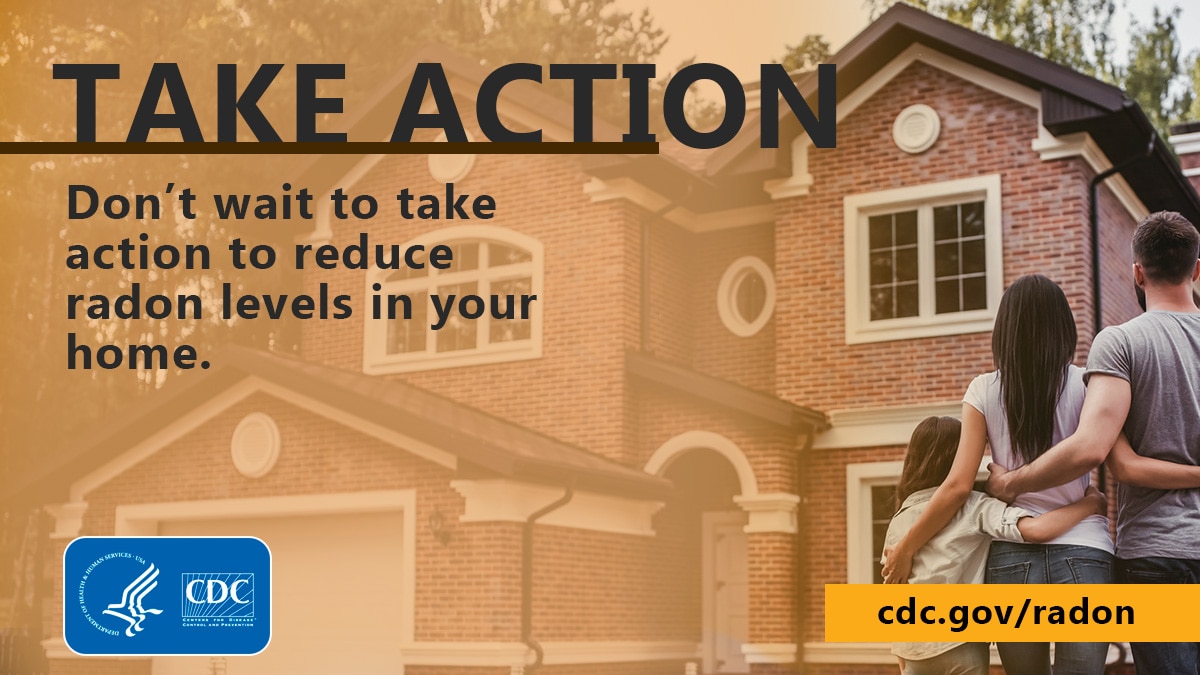Key points
- Radon can be found in the air outside and can build up inside buildings and homes.
- If your home radon level is at or above 4 pCi/L of air, contact a qualified professional to install a radon reduction system.
- Even if your radon levels are not above 4 pCi/L, consider increasing ventilation and sealing cracks in your home.

Overview
Radon is a radioactive gas that is naturally released in the air from rocks and soil. It can be found in the air outside and can build up inside buildings and homes.
There is no known safe level of radon. Aiming for the lowest radon level you can achieve in your home will reduce your risk of harmful health effects, including lung cancer.
When you should take action
Test your home radon level. The Environmental Protection Agency (EPA) recommends contacting a qualified professional to install a radon reduction (also called radon mitigation) system if your home radon level is at or above 4 pCi/L of air. EPA also recommends taking action to reduce radon if your home radon level is from 2 pCi/L through 4 pCi/L.
If you are buying a new home, ask about including radon-resistant features. This will help prevent or minimize radon entering your home and the need to install a more costly system in the future.
Prevention steps and strategies
Radon reduction system
Contact your state radon office or one of EPA's national radon proficiency programs to find a qualified professional to fix your home. Lowering high radon levels requires technical knowledge and special skills. Contractors who do not specialize in radon reduction could make the problem worse.
There are several proven methods to reduce radon in your home. The one most used has a vent pipe system and fan, which pulls radon from beneath the house and vents it to the outside. This system, known as a soil depressurization system, does not require major changes to your home.
Sealing foundation cracks and other openings makes this kind of system more effective and cost-efficient. Similar systems can also be installed in houses with crawl spaces. The right system depends on the design of your home and other factors like whether your home has a basement.
After installing a radon reduction system, test your home again to make sure it is working. Consider retesting your home every two years to be sure radon levels remain low. Also retest your home after any remodeling.
Other ways to reduce radon
If your radon levels are not above 4 pCi/L, there are still things you can do to keep radon levels as low as possible in your home.
Increase air flow in your house by opening windows and using fans and vents to circulate air. Natural ventilation in any type of house should not be considered radon mitigation since it is only a temporary strategy to reduce radon.
Seal cracks in floors and walls with plaster, caulk, or other materials designed for this purpose.
Always test radon levels again after you've made any of these changes.
Carol's Radon Story
Costs to reduce radon
The cost of reducing radon in your home can vary widely. Cost depends on how your home was built and the extent of the radon problem. However, most homes can be fixed for about the same cost as other common home repairs. Contact your state radon office for more information or get one or more estimates from qualified contractors.
